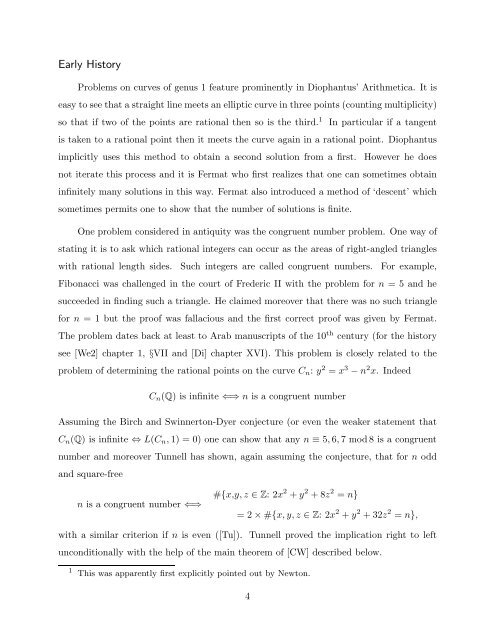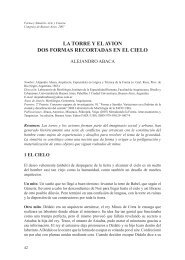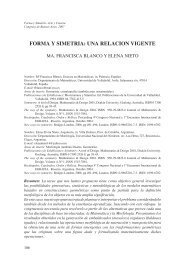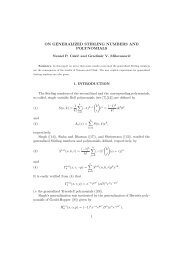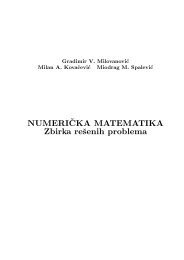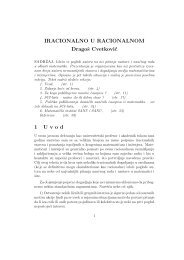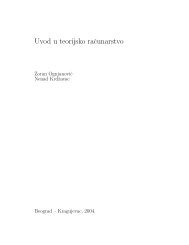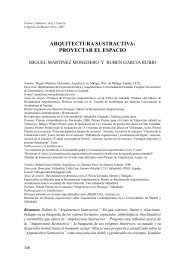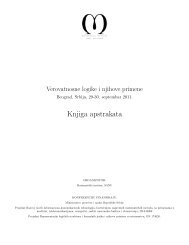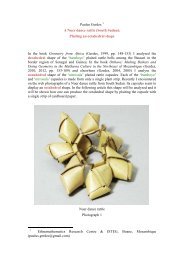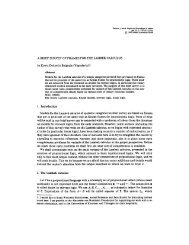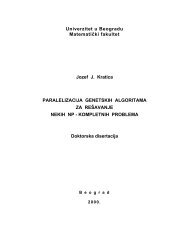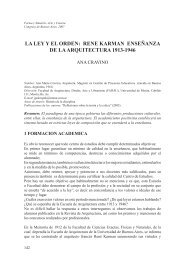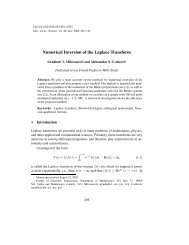The Birch and Swinnerton-Dyer Conjecture
The Birch and Swinnerton-Dyer Conjecture
The Birch and Swinnerton-Dyer Conjecture
You also want an ePaper? Increase the reach of your titles
YUMPU automatically turns print PDFs into web optimized ePapers that Google loves.
Early History<br />
Problems on curves of genus 1 feature prominently in Diophantus’ Arithmetica. It is<br />
easy to see that a straight line meets an elliptic curve in three points (counting multiplicity)<br />
so that if two of the points are rational then so is the third. 1 In particular if a tangent<br />
is taken to a rational point then it meets the curve again in a rational point. Diophantus<br />
implicitly uses this method to obtain a second solution from a first. However he does<br />
not iterate this process <strong>and</strong> it is Fermat who first realizes that one can sometimes obtain<br />
infinitely many solutions in this way. Fermat also introduced a method of ‘descent’ which<br />
sometimes permits one to show that the number of solutions is finite.<br />
One problem considered in antiquity was the congruent number problem. One way of<br />
stating it is to ask which rational integers can occur as the areas of right-angled triangles<br />
with rational length sides. Such integers are called congruent numbers. For example,<br />
Fibonacci was challenged in the court of Frederic II with the problem for n =5<strong>and</strong>he<br />
succeeded in finding such a triangle. He claimed moreover that there was no such triangle<br />
for n = 1 but the proof was fallacious <strong>and</strong> the first correct proof was given by Fermat.<br />
<strong>The</strong> problem dates back at least to Arab manuscripts of the 10 th century (for the history<br />
see [We2] chapter 1, §VII <strong>and</strong> [Di] chapter XVI). This problem is closely related to the<br />
problem of determining the rational points on the curve C n : y 2 = x 3 − n 2 x. Indeed<br />
C n (Q) is infinite ⇐⇒ n is a congruent number<br />
Assuming the <strong>Birch</strong> <strong>and</strong> <strong>Swinnerton</strong>-<strong>Dyer</strong> conjecture (or even the weaker statement that<br />
C n (Q) is infinite ⇔ L(C n , 1) = 0) one can show that any n ≡ 5, 6, 7 mod 8 is a congruent<br />
number <strong>and</strong> moreover Tunnell has shown,again assuming the conjecture,that for n odd<br />
<strong>and</strong> square-free<br />
n is a congruent number ⇐⇒<br />
#{x,y, z ∈ Z: 2x 2 + y 2 +8z 2 = n}<br />
=2× #{x, y, z ∈ Z: 2x 2 + y 2 +32z 2 = n},<br />
with a similar criterion if n is even ([Tu]). Tunnell proved the implication right to left<br />
unconditionally with the help of the main theorem of [CW] described below.<br />
1 This was apparently first explicitly pointed out by Newton.<br />
4


